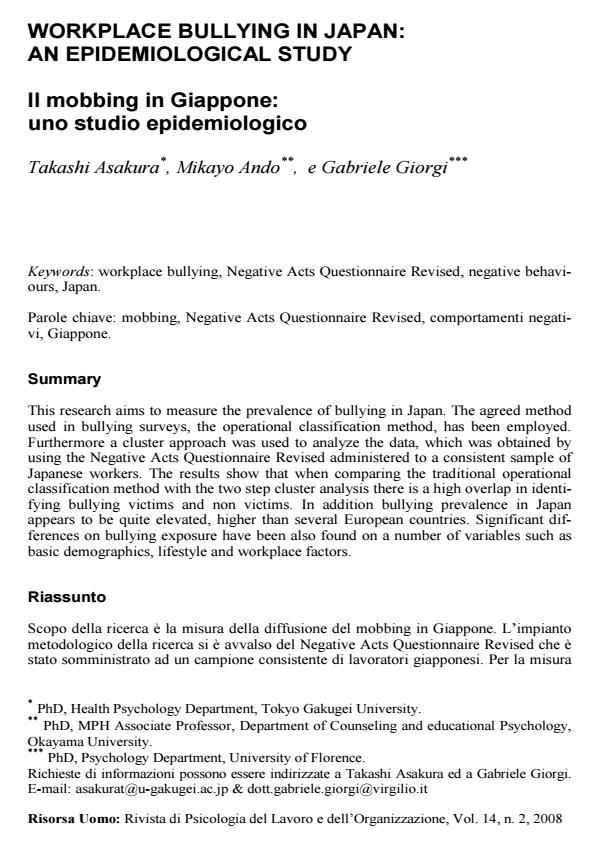Workplace bullying in Japan: an epidemiological study Il mobbing in Giappone: uno studio epidemiologico
Titolo Rivista RISORSA UOMO
Autori/Curatori Takashi Asakura, Mikayo Ando, e Gabriele Giorgi
Anno di pubblicazione 2008 Fascicolo 2008/2 Lingua Italiano
Numero pagine 15 P. 141-155 Dimensione file 97 KB
DOI
Il DOI è il codice a barre della proprietà intellettuale: per saperne di più
clicca qui
Qui sotto puoi vedere in anteprima la prima pagina di questo articolo.
Se questo articolo ti interessa, lo puoi acquistare (e scaricare in formato pdf) seguendo le facili indicazioni per acquistare il download credit. Acquista Download Credits per scaricare questo Articolo in formato PDF

FrancoAngeli è membro della Publishers International Linking Association, Inc (PILA)associazione indipendente e non profit per facilitare (attraverso i servizi tecnologici implementati da CrossRef.org) l’accesso degli studiosi ai contenuti digitali nelle pubblicazioni professionali e scientifiche
This research aims to measure the prevalence of bullying in Japan. The agreed method used in bullying surveys, the operational classification method, has been employed. Furthermore a cluster approach was used to analyze the data, which was obtained by using the Negative Acts Questionnaire Revised administered to a consistent sample of Japanese workers. The results show that when comparing the traditional operational classification method with the two step cluster analysis there is a high overlap in identifying bullying victims and non victims. In addition bullying prevalence in Japan appears to be quite elevated, higher than several European countries. Significant differences on bullying exposure have been also found on a number of variables such as basic demographics, lifestyle and workplace factors Keywords: workplace bullying, Negative Acts Questionnaire Revised, negative behaviours, Japan.;
Takashi Asakura, Mikayo Ando, e Gabriele Giorgi, Workplace bullying in Japan: an epidemiological study Il mobbing in Giappone: uno studio epidemiologico in "RISORSA UOMO " 2/2008, pp 141-155, DOI: